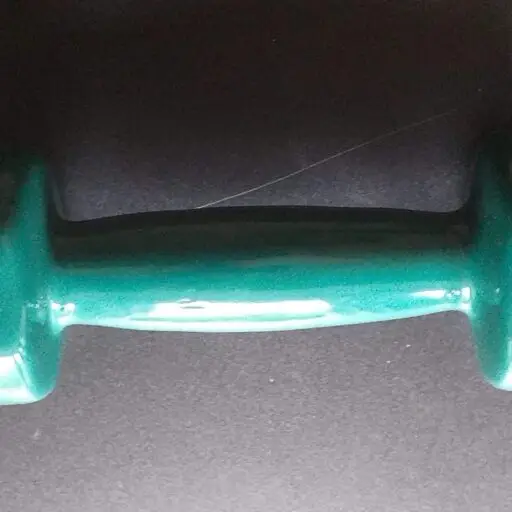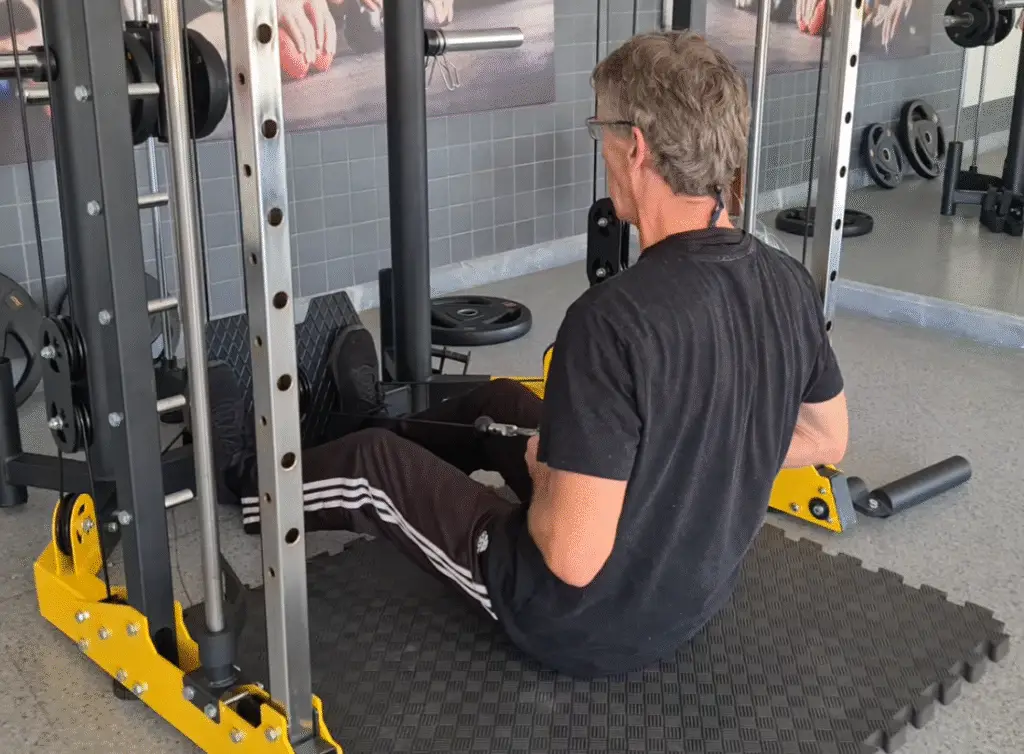All about the Seated Cable Row
(Back)
BENEFITS & MUSCLES WORKED: Back, Lats, Traps, Core, Biceps
START POSITION: Sit on a bench facing a pulley system where the cable is directly between your legs and fixed to the pulley, not too far off the ground. Lock your feet in somehow (there should be a plate or something for this), and make a good bend on your knees. Reach forward to grab the cable and bring it back towards your lower abdomen – to the position shown. This is the Start Position.
NOTES: Difficulty Rating: 72%
Take care not to lean back too far, as this will place stress on your Lower Back.
Keep your shoulder blades back and down, and your elbows tucked in (not flared). Puff out your chest as you reach the rear position. When moving forwards, allow the cables to pull you forwards a short way beyond the vertical (under firm control from your core and back muscles) so that you get a good stretch on your Lats. Keep your chin up and look forward. Pause very briefly (half a second is enough) at the rear position before rocking forwards again. Focus on maintaining a tight core, especially as you return to the full rear position. I prefer to perform the Seated Cable Row using a small V-handle attachment because it is neater and more stable. However, this exercise can also be done using a wider bar and with a pronated (overhand) grip.
Having sustained quite a serious Lower Back Injury in my thirties, I have since then been ultra-pedantic about using perfect form whenever doing back exercises in the gym. In the early months following my injury, I almost gave up the gum completely because it seemed impossible to continue. However, I loved the benefits gained from gym exercise, which galvanized me to figure out what worked for me and what didn’t. It was a very long journey of discovery (and lots of talking to Gym coaches for ideas). Nowadays, I am happy to coach other people through their own Back and Shoulder injuries by teaching them the same knowledge that I painstakingly acquired.
I can say with utmost confidence that the Seated Cable Row (when performed correctly, of course) is up there in the top 15 best exercises for lower back injuries. I should also say at this point that the traditional sliding bench rowing machine (which is very similar to this exercise) is a BIG NO-NO for people with lower back issues. I would also advise avoiding certain types of sit-ups and crunches, which are not included in the exercises described under the Mojoh Method. Keeping a firmly planted and stable lower Back when exercising with weights is of paramount importance.

